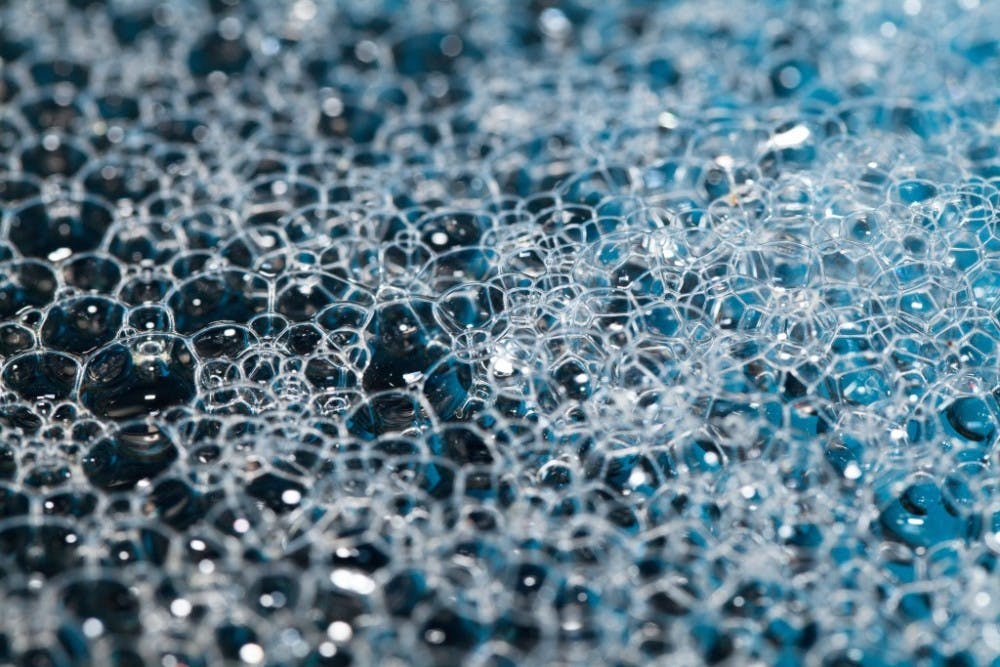Solar or photovoltaic cells convert the sun’s light to electricity. They are currently used in many different contexts from large-scale operations such as powering water treatment plants and lighting systems to smaller uses like powering watches and calculators. The industry standard involves manufacturing the cells using a silicon semiconductor in a metal frame covered by a protective covering of silicon rubber or butyryl plastic. High temperatures and powerful solvents are required in order to bind all of the components of the cell together. After they are constructed the solar cells must be covered in protective plastic or glass before they can be distributed and installed.
MIT Professor Vladimir Bulović, Research Scientist Annie Wang and Doctoral Student Joel Jean have discovered an innovation that modifies the production process of photovoltaic cells while simultaneously shattering previous size limits on the cells. An article published in the journal of Organic Electronics describes their path towards the creation of the lightest solar cells ever. The key to their success lies in their modification of the growth process for solar cells. They discovered a way to make the solar cell, the substrate that protects it and its protective overcoating all at once. In doing so all of the parts of the cell are fully formed without the cell ever being left vulnerable to the environment.
“The innovative step is the realization that you can grow the substrate at the same time as you grow the device,” Bulović, associate dean for innovation and Fariborz Maseeh, professor of Emerging Technology at MIT, said in a press release.
For their initial experiments the team used a common polymer called parylene as both the substrate and the overcoating. Commercially parylene is commonly used to protect sensitive devices such as implanted biomedical devices and printed circuit boards. For the light-absorbing layer of the solar cells, the scientists chose an organic material called DBP. While DBP and parylene were used in testing, Bulović and his team stated that the process is not limited to any particular media. Many different thin-film solar cell materials ranging from quantum dots to perovskites could potentially replace the organic layers that were used in this experiment. Countless substitutions exist for the substrate and encapsulation layers of solar panels. This new process is therefore adaptable depending on material availability.
“We think it’s a lot of hard work ahead, but likely no miracles needed.” —Vladimir Bulovic, MIT Professor
The cell growth takes place in a vacuum. By combining all the steps of the process, Bulović was able to ensure that the substrate was never handled or removed from the vacuum during fabrication. Isolating the substrate in the vacuum prevents it from being exposed to dust and other various potential contaminants. Not only does Bulović’s new solar cell solution simplify the steps involved in solar cell creation, but it also removes the need for intense heat and chemicals. In the vacuum-sealed chamber, the cells are formed at room temperature and without the use of solvents.
Using these new techniques, the researchers have created the thinnest, lightest solar cells ever. To demonstrate the validity of the claim, the cells were draped on top of a soap bubble without popping the bubble.
“If you breathe too hard, you might blow it away,” Jean said in a press release.
The researchers spent years working towards perfecting the process that they used to create the ultra-light cells. Now that they have succeeded, they have begun to think about the commercial viability of such a product.
“We have a proof-of-concept that works,” Bulović said. “The next question is, ‘How many miracles does it take to make it scalable?’ We think it’s a lot of hard work ahead, but likely no miracles needed.”
It is already possible to safely deposit the tiny layers of parylene film that back the cells using existent commercial equipment. The parylene film covering the cells is approximately 80 microns across, which is one-tenth the thickness of kitchen cling-wrap. To form the cells, the parylene is first deposited on a sturdy carrier material. For testing purposes, the researches deposited the film on glass, but multiple materials can be used for this step. The tricky part of the procedure is later separating the thin material from the glass. To do so, a flexible film frame is used to lift the entire system off of the surface of the glass. The final product, the cell, is one-fiftieth the thickness of a human hair, and one-thousandth the thickness of current solar cells.
“We put our carrier in a vacuum system, then we deposit everything else on top of it, and then peel the whole thing off,” Wang said in a press release.
In creating the ultra-thin cells, these researchers are considered to have expanded the potential for solar cells. Reducing the size of the cell has not even compromised the cells’ efficiency. In fact, the power-to-weight ratio of the cells is the highest that has ever been achieved. When compared to existent solar cells, the new cells’ ability to convert sunlight to electricity falls right in line. A typical silicon-based solar module produces about 15 watts of power per kilogram. The new cells can produce at least six watts per gram, which is almost 400 times more than what the typical solar cells can produce.
These ultra-light cells could potentially be placed on anything from smartphones to T-shirts to a piece of paper. Their size is such that they would be almost unnoticeable. In fields where weight is sensitive, such as spacecraft operations or research using high-altitude helium balloons, the benefit of the light-as-air cells could be substantial.
“It could be so light that you don’t even know it’s there, on your shirt or on your notebook,” Bulović said. “These cells could simply be an add-on to existing structures.”























Please note All comments are eligible for publication in The News-Letter.